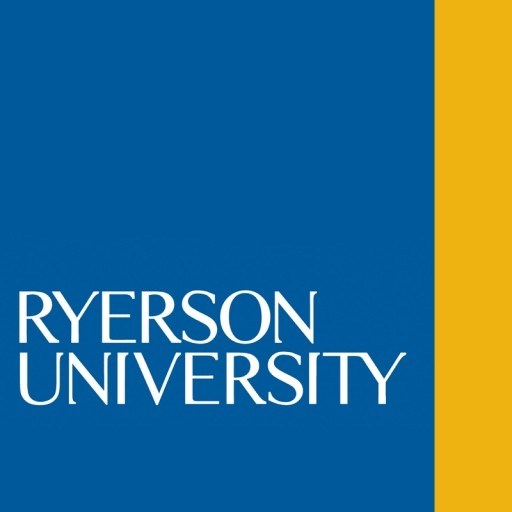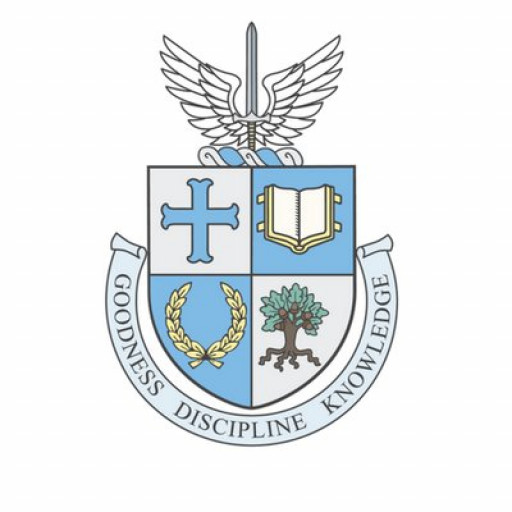Photos of university / #WhyRyerson
The Bachelor of Arts in Geographical Analysis at Ryerson University offers students a comprehensive understanding of spatial data, geographic information systems (GIS), and spatial analysis techniques vital for addressing complex urban and environmental challenges. This innovative program combines theoretical knowledge with practical skills, preparing graduates for diverse careers in urban planning, environmental management, transportation, and geospatial technology. Throughout the curriculum, students engage with coursework that covers physical geography, human geography, data visualization, cartography, remote sensing, and spatial econometrics, ensuring a well-rounded education in spatial analysis methodologies. Emphasizing hands-on learning, the program provides extensive training in GIS software, spatial data management, and spatial modeling, often through project-based assignments and internships with industry partners. Graduates of this program are equipped to analyze spatial patterns, make data-driven decisions, and contribute to sustainable urban development initiatives. The program also encourages interdisciplinary collaboration, integrating insights from environmental science, sociology, economics, and urban studies. With a strong focus on innovation and technical proficiency, the Geographical Analysis program aims to produce graduates who can effectively address societal challenges such as climate change, transportation planning, and resource management. Upon completion, students are prepared to pursue professional roles in government agencies, consulting firms, research institutions, and non-profit organizations, or to continue their education through graduate studies in geography or related fields. The program is designed to foster critical thinking, problem-solving skills, and ethical considerations essential for responsible use of geospatial data in decision-making processes.
The Bachelor of Arts in Geographical Analysis at Ryerson University is a comprehensive program designed to equip students with a strong understanding of spatial concepts, geographic information systems (GIS), and data analysis techniques. This interdisciplinary program combines principles from geography, urban planning, environmental studies, and data science to prepare graduates for dynamic careers in mapping, urban planning, environmental management, transportation, and related fields. Throughout the degree, students engage with both theoretical frameworks and practical applications, ensuring they develop critical thinking, problem-solving skills, and technical proficiency.
The curriculum covers core topics such as spatial data acquisition, cartography, remote sensing, geostatistics, and spatial modeling. Students learn to utilize leading GIS software platforms and develop skills in data visualization, spatial analysis, and geographic databases. Emphasis is placed on understanding the social, economic, and environmental implications of geographic information, enabling students to address real-world challenges with innovative solutions.
In addition to technical training, the program fosters a strong foundation in research methods, critical analysis, and ethical considerations related to geographic data. Students have opportunities to participate in fieldwork, collaborative projects, and internships that connect academic knowledge with industry practices. The program also encourages the development of communication skills, empowering graduates to effectively present spatial data and analysis to diverse audiences, including policymakers, community stakeholders, and the general public.
Graduates of the Geographical Analysis program are well-prepared for careers in government agencies, private consulting firms, non-profit organizations, and research institutions. They may work as GIS analysts, urban planners, environmental consultants, transportation planners, or spatial data specialists. Additionally, the program provides a solid foundation for those interested in pursuing graduate studies in geography, urban planning, or related fields.
Overall, the Geographical Analysis program at Ryerson University aims to develop skilled professionals who understand the complex relationships between geography and societal development. With a strong emphasis on practical skills and innovative thinking, the program prepares students to contribute meaningfully to sustainable development, urban resilience, and spatial data management in a rapidly changing world.
Program Requirements:
The Bachelor's Degree in Geographical Analysis at Ryerson University is designed to provide students with a comprehensive understanding of geographic concepts, spatial analysis techniques, and their applications in various industries. To successfully complete this program, students must fulfill several academic and practical requirements. The program typically necessitates the completion of foundational courses in geography, such as Introduction to Geography, and more specialized courses like GIS (Geographic Information Systems), remote sensing, spatial data analysis, and urban planning. Students are also expected to engage in laboratory work and field studies to develop practical skills in data collection, analysis, and interpretation.
In addition to core courses, students may choose from a range of electives that allow for specialization in areas like environmental management, urban and regional planning, or transportation geography. The program emphasizes the development of analytical skills through coursework that involves quantitative methods, spatial statistics, and computer-based mapping techniques. To foster experiential learning, students are often required to participate in internships or cooperative education placements, which provide real-world experience in geographic analysis projects with industry partners or government agencies.
Graduates are expected to complete a capstone project or thesis that demonstrates their ability to apply theoretical knowledge and technical skills to solve complex geographic problems. Academic progression generally involves maintaining a satisfactory grade point average (GPA) in all required courses, with particular emphasis on the GIS and spatial analysis courses. Furthermore, students are encouraged to participate in workshops, seminars, and conferences related to geography and spatial sciences to stay current with emerging trends and innovations.
Language proficiency in English, along with good communication skills, are essential for completing presentations, reports, and collaborative projects. Overall, the program aims to prepare students for careers in geographic information systems, urban planning, environmental consultancy, transportation planning, or further academic research. The requirements are designed to ensure that graduates possess a well-rounded skill set, combining theoretical understanding, technical expertise, and practical experience needed for professional success in the field of Geographical Analysis.
The Geographical Analysis program at Ryerson University offers a variety of financing options to support students throughout their academic journey. Tuition fees for domestic students are generally structured according to the university’s undergraduate fee schedule, which is updated annually. International students may face higher tuition rates, reflecting the university’s differentiated fee structure for international enrollment. In addition to tuition, students should budget for ancillary costs including student fees, textbooks, supplies, and living expenses. Ryerson University provides financial aid resources such as scholarships, bursaries, and awards designed to recognize academic achievement, leadership, and financial need. These funds are competitive and often require separate applications, with specific eligibility criteria. The university’s scholarship database, available on its official website, offers detailed information about available awards, application procedures, and deadlines. Students are encouraged to apply early to maximize their chances of receiving financial assistance. Besides university-specific awards, students can explore external sources of funding, including government grants, student loans, and private scholarships. The Ontario Student Assistance Program (OSAP) is a primary resource for domestic students in Ontario, providing loans and grants to help cover education and living costs. International students, while less likely to qualify for government aid, may find funding opportunities through private organizations, departmental awards, or through work-study programs offered on campus. Ryerson University also has partnerships with various industry organizations and community stakeholders that may provide internship stipends or project funding, contributing indirectly to students’ financial stability during their studies. Additionally, students are advised to consider part-time employment opportunities both on-campus and in the local community. The university’s Career Centre offers job placement services and employment resources to assist students in balancing work and study commitments effectively. Overall, while the cost of studying Geographical Analysis at Ryerson University varies based on individual circumstances, the institution provides a comprehensive array of financial support options designed to make education accessible and affordable.
The Geographical Analysis program at Ryerson University is designed to equip students with a comprehensive understanding of spatial data, geographic information systems (GIS), and spatial analysis techniques. The program emphasizes the development of technical skills necessary for analyzing geographic patterns and relationships, which are essential in sectors such as urban planning, environmental management, transportation, and resource development. Students gain proficiency in various GIS software platforms, spatial data management, cartography, and quantitative methods, enabling them to interpret complex spatial data and contribute to informed decision-making processes. The curriculum typically integrates theoretical foundations with practical applications, providing students with hands-on experience through projects and internships. Graduates of the program are prepared for careers in government agencies, consulting firms, non-profit organizations, and private industries where spatial analysis informs policy and operational strategies. The program's faculty comprises experts in geography, environmental science, urban planning, and data science, fostering an interdisciplinary approach to geographical analysis. Admission requirements generally include a high school diploma or equivalent, along with prerequisites in mathematics and science, though specific entry criteria may vary. The program may also offer opportunities for specialization in areas such as GIS development, remote sensing, or urban spatial analysis. Staying current with advances in technology and methodology is a core component of the program, ensuring graduates are prepared for evolving industry demands. Overall, the Geographical Analysis program at Ryerson University combines technical training, critical thinking, and real-world applications to develop skilled professionals capable of addressing complex geographic challenges.


